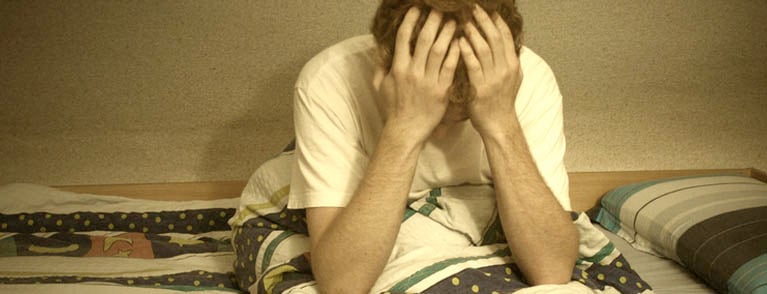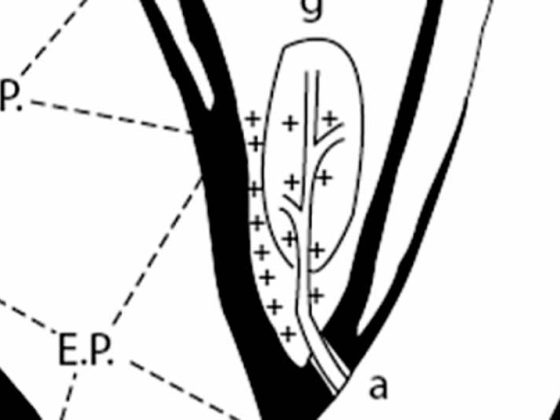Depression is the most common accompanying symptom of dementia and often the first to announce the onset of cognitive decline. The differential diagnosis of depression and dementia is difficult, and the overlap leads to additional impairment of the affected person in everyday life. Diagnosis and therapy need special attention in order to do justice to both diseases. Early recognition of symptomatology can save patients and their caregivers a great deal of suffering.
Dementia disorders lead not only to cognitive impairment, but also to a range of accompanying behavioral and psychological symptoms of dementia (BPSD). The most common symptom is depression [1]. The prevalence of depression at the onset of dementia is 29% and increases up to 47% after five years of disease progression. Thus, half of all patients with dementia show depressive symptoms in the course, and in the severe stage of dementia, several BPSD complicate the course of the disease. Depression is also one of the symptoms that further impair the daily living abilities of those affected and place the greatest burden on caregivers [2]. Caregivers then often develop depression themselves and must be considered in therapy and care.
What comes first?
The relationship between depression and dementia is very complex, and both conditions have overlapping pathogenesis [3]. Pathological changes such as overactivation of the hypothalamic-pituitary-adrenal axis, chronic inflammation, or disruption of the signaling cascade of some nerve growth factors suggest a common neurobiological basis. Patients with Alzheimer’s dementia (AD) and depression have more amyloid-β plaques and neurofibril bundles than patients with AD without depression, suggesting a common neurodegenerative process. Therefore, the alternative hypotheses are discussed, whether depression is a risk factor for later dementia, whether depression in old age is the prodromal symptom of dementia, or whether depression and dementia are only comorbidities. The discussion is further complicated by the fact that depression is also associated with cognitive impairment, which is often difficult to distinguish from dementia. But usually the cognitive symptoms of depression improve after successful therapy.
A meta-analysis shows that individuals with a history of depression are more likely to develop dementia later than individuals without depression, which would support the risk factor hypothesis for dementia in recurrent depression [4]. However, depression seems to be etiologically more related to vascular dementia than to AD [5]. Affected individuals with a history of depression are more likely to develop vascular dementia later than AD. In contrast, depression that first appears late in life could be a prodromal symptom of dementia [5].
Depression is among the BPSDs that are common in the early stages of dementia and persist throughout the course, whereas other BPSDs such as delusions and hallucinations occur later in the dementia course. In the case of depression in old age, further diagnosis and clarification are absolutely necessary in order to be able to detect the onset of dementia at an early stage. These cases are easily overlooked, resulting in dementia going undiagnosed. Finally, depression may occur as a comorbid symptom of dementia, as a reaction to becoming aware of the onset of cognitive decline and adjusting to diminished capacity. This psychodynamic development must be taken into account in psychotherapy.
Cognitive disorders in depression
Cognitive impairment almost always occurs in the context of depression. These are primarily slowing of the speed of information processing and disturbances in episodic memory, language, working memory, and executive functions [6]. The cognitive symptoms of depression additionally cause sufferers to lose their independence.
When depression and dementia overlap in old age, the consequences are all the more severe. In this context, the cognitive symptoms of the two disorders are difficult to distinguish. Often one has to wait for the therapy of the depression to be able to make a neuropsychological differentiation. However, certain clues can be helpful: Affected persons with dementia have orientation disorders, whereas orientation is intact in depressed patients [7]. In dementia, recognition of objects is significantly impaired, and aphasia and apraxia may occur. Memory impairment in dementia progressively worsens and is not reversed by treatment of depression. Symptoms such as sadness, listlessness, sleep disturbances, anxiety and somatic complaints such as pain are very typical of old-age depression. Unfortunately, many depressions in the elderly are subsyndromal and do not have the full expression of symptoms, further complicating the differential diagnosis.
Diagnostics
The workup of an older person with depression and dementia must always begin with a detailed history and clinical examination with laboratory and other diagnostic procedures to rule out somatic disease. In addition to psychiatric symptoms, the assessment focuses on concomitant somatic and neurological disorders and important factors such as medication (some medications can cause depression and interactions need to be reviewed) and psychosocial stressors. If there is evidence of cognitive impairment, neuropsychological testing and imaging are essential. Magnetic resonance imaging of the brain should be performed in any elderly depressed person with suspected dementia.
Scales such as the “Hamilton Depression Scale” (HAMD) or the “Montgomery-Asberg Depression Rating Scale” (MADRS) are available for the detailed diagnosis of depression. In geriatric psychiatry, the “Geriatric Depression Scale” (GDS) has also proven its worth [8]: Affected persons are asked to answer 15 questions with yes or no, so that one can quickly distinguish between mild and severe depression. The Cornell Scale for Depression in Dementia (CSDD) is a very appropriate instrument to assess depressive symptoms in dementia. In the case of an existing or suspected dementia, the neuropsychological diagnosis must be extended to include a dementia assessment.
Therapy
The current treatment recommendations of the Swiss professional societies address in detail the treatment of BPSD, especially depression [9]. As with depression in younger adults, psychotherapeutic and nonpharmacologic interventions are the mainstay of treatment for depression in the elderly. Treatment of first choice is psychotherapy; it can also be used to good effect in patients with mild to moderate dementia. There are some well effective psychological intervention options available [10], for example psychotherapy methods such as cognitive-behavioral therapy or interpersonal psychotherapy, which address everyday problems and resources of the affected person and involve relatives. Nursing interventions and additional therapies are always offered concomitantly and must be adapted to the severity of dementia and the expression of BPSD [9].
When selecting drug therapy, decisions must be made based on drug side effect and interaction profiles. Newer agents such as serotonin reuptake inhibitors (SSRIs) have been shown to have lower anticholinergic side effect potential compared with older tricyclic antidepressants [11]. The use of tricyclic antidepressants is generally not recommended in elderly patients and patients with dementia [9]. Benzodiazepines, which remain among the most widely used psychotropic drugs in the elderly, should also be avoided because they have a high risk potential for falls, dependence, delirium, and cognitive decline [9]. Benzodiazepine analogues can be used for a limited time for sleep disorders but have similar problems to benzodiazepines. Neuroleptics often used in patients with dementia have serious side effects and are recommended only when clearly indicated and for a limited time [9]. Interventions with fewer side effects, such as light therapy, very often contribute to symptom relief quickly.
Relative care should be an integral part of any therapy for dementia. Socially relieving measures can indirectly help to prevent or reduce depressive symptoms in those affected and their caregivers. Effective and early therapy can help preserve patients’ cognitive function and daily living skills and social resources for longer.
Prof. Dr. med. Egemen Savaskan
Literature:
- Steinberg M, et al: Point and 5-year period prevalence of neuropsychiatric symptoms in dementia: the Cache County Study. Int J Geriatr Psychiatry 2008; 23: 170-177.
- Fauth EB, Gibbons A: Which behavioral and psychological symptoms of dementia are the most problematic? Variability by prevalence, intensity, distress ratings, and associations with caregiver depressive symptoms. Int J Geriatr Psychiatry 2014; 29: 263-271.
- Caraci F, et al: Depression and Alzheimer’s disease: neurobiological links and common pharmacological targets. Eur J Pharmacol 2010; 626: 64-71.
- Ownby RL, et al: Depression and risk for Alzheimer disease: systematic review, meta-analysis, and metaregression analysis. Arch Gen Psychiatry 2006; 63: 530-538.
- Barnes, et al: Midlife vs late-life depressive symptoms and risk of dementia: differential effects for Alzheimer disease and vascular dementia. Arch Gen Psychiatry 2012; 69(5): 493-498.
- Sheline YI, et al: Cognitive function in late life depression: relationships to depression severity, cerebrovascular risk factors and processing speed. Biol Psychiatry 2006; 60: 58-65.
- Beblo T, Lautenbacher S: Hofgreve Verlag. 2006.
- Yesavage JA, et al: Development and validation of a geriatric depression screening scale: a preliminary report. J Psych Res 1983; 17: 37-49.
- Savaskan E, et al: [Recommendations for diagnosis and therapy of behavioral and psychological symptoms in dementia (BPSD)]. Practice 2014; 103(3): 135-148.
- Fiske A, et al: Depression in older adults. Annu Recv Clin Psychol 2009; 5: 363-389.
- Banerjee S, et al: Sertraline or mirtazapine for depression in dementia (HTA-SADD): a randomised, multicentre, double-blind, placebo-controlled trial. Lancet 2011; 378: 403-411.
HAUSARZT PRAXIS 2014; 9(12): 13-15












